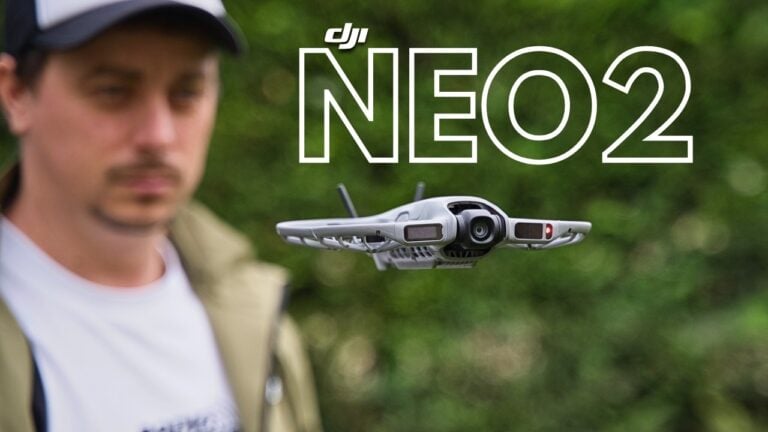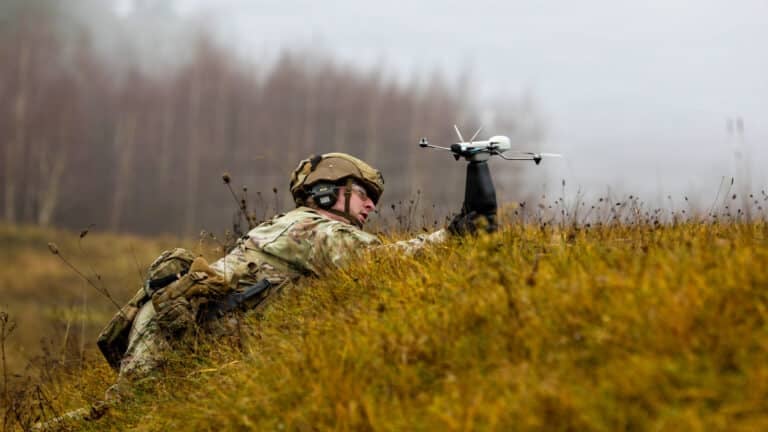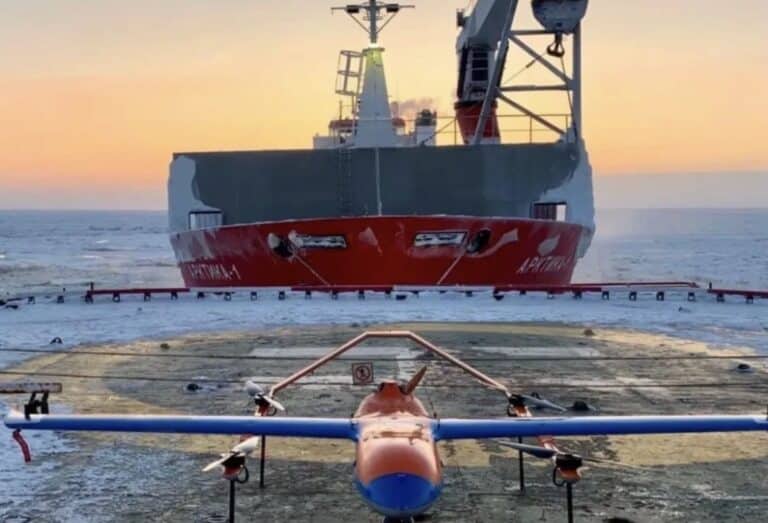$28 Million MQ-9 Reaper Drone Crashes Into Yellow Sea Off South Korea

Amazon Drone Deals: DJI Mini 5 Pro Fly More Combo with DJI RC2 now for $1,099!
A U.S. Air Force MQ-9 Reaper drone plunged into the Yellow Sea off South Korea’s west coast Monday morning, triggering recovery operations in waters where China, North Korea, and South Korea all have strategic interests, according to the New York Times.
The crash comes just two months after the Pentagon permanently deployed Reapers to the Korean Peninsula for the first time. Now a $28 million surveillance aircraft loaded with sensitive technology sits somewhere on the seafloor of one of Asia’s most contested waterways.
What We Know About the Reaper Drone Crash
The drone went down at approximately 4:35 a.m. local time near Maldo-Ri Island, a tiny spit of land about 15 miles from Kunsan Air Base.
The aircraft was assigned to the 431st Expeditionary Reconnaissance Squadron, a unit activated just this September as part of Washington’s effort to bolster reconnaissance capabilities in the Western Pacific.
A spokeswoman for the 8th Fighter Wing confirmed to Yonhap News Agency that the drone “was involved in an incident while performing a routine mission.”
No injuries or property damage occurred. The cause remains under investigation.
Recovery Operations in Sensitive Waters
As of Tuesday afternoon local time, the Reaper had not been recovered.
The 8th Fighter Wing stated it is “focused on planning and preparing for a safe and thorough recovery operation” in coordination with South Korea’s Navy and Coast Guard, according to UPI.
The location presents complications. China, North Korea, and South Korea all have coastlines on the Yellow Sea. The Chinese mainland sits just 250 miles from Kunsan, while the Bohai Sea, where China’s navy frequently conducts exercises, is roughly 600 miles away.
China has been aggressively expanding its military presence in the Yellow Sea throughout 2025, installing steel structures, deploying surveillance buoys, and declaring “no-sail zones” for military exercises in disputed waters.
The 2023 Black Sea Precedent
This crash echoes a March 2023 incident when Russian Su-27 fighters intercepted and collided with an MQ-9 Reaper over the Black Sea, forcing it into the water.
In that case, Russian ships rushed to the crash site to potentially recover wreckage. U.S. officials claimed they had made it “impossible for them to be able to glean anything of intelligence value off the remnants of that drone,” according to Pentagon statements at the time.
Recovery proved impossible due to depths exceeding 5,000 feet (1,500 meters).
The Yellow Sea’s average depth is far shallower, potentially making recovery more feasible for whoever reaches the wreckage first.
MQ-9 Reaper: Capabilities and Costs
The MQ-9 Reaper represents one of the most expensive and sophisticated drones in the U.S. arsenal.
Key specifications include a 66-foot (20-meter) wingspan, 36-foot (11-meter) length, and the ability to fly at altitudes up to 50,000 feet (15,240 meters) for nearly 27 hours continuously.
The average unit cost runs approximately $28 million, according to a 2022 Congressional Research Service report.
From Kunsan, Reapers can reach deep into North Korea, cover the East China Sea, and even extend surveillance to Taiwan, roughly 800 miles away. The mission, according to the Air Force, is to “support US-Korean priorities in intelligence, surveillance and reconnaissance across the Indo-Pacific theater.”
A Troubled Safety Record
MQ-9 operations have a checkered reliability history.
The Congressional Research Service found that Reapers suffer 15% more “Class A mishaps” than manned military aircraft. Class A mishaps result in at least $2.5 million in damage, destruction of an aircraft, or loss of life.
Between fiscal years 2022-2024, the Air Force averaged six Class A mishaps per year across its unmanned fleet, of which MQ-9s comprise the vast majority.
Recent losses include:
- December 2024: Propeller detached mid-flight, Reaper crashed into Mediterranean Sea
- September 2024: Two MQ-9s shot down over Yemen by Houthi rebels
- January 2024: Reaper downed in Poland
- March 2023: Russian fighter collision over Black Sea
DroneXL’s Take
This crash couldn’t have come at a worse time for the U.S. military’s Indo-Pacific surveillance ambitions.
The 431st Expeditionary Reconnaissance Squadron was activated barely two months ago, representing the first permanent MQ-9 deployment to the Korean Peninsula. Before September, Reapers only rotated through South Korea temporarily. Now, the flagship asset of that new permanent presence is sitting on the seafloor of contested waters.
The Yellow Sea is rapidly becoming one of Asia’s most dangerous flashpoints, yet it receives far less attention than the South China Sea. China has been systematically expanding its military footprint in these waters throughout 2025, installing surveillance infrastructure and challenging South Korean vessels in the Provisional Measures Zone where both nations claim overlapping exclusive economic zones.
We’ve covered the MQ-9’s dual role extensively. Just weeks ago, we reported on MQ-9 Predator drones monitoring U.S. protesters in Los Angeles, raising questions about domestic surveillance overreach. In September, we documented armed Reapers deployed to Puerto Rico amid controversial Caribbean operations. The pattern is clear: the MQ-9 remains America’s go-to surveillance and strike platform, deployed everywhere from drug interdiction to great power competition.
The reliability concerns are real. Earlier this year, we covered a South Korean military drone colliding with a helicopter at an airfield, another reminder that integrating advanced UAVs into military operations remains challenging even for sophisticated forces.
Meanwhile, South Korea is building an entire drone carrier fleet to address its manpower challenges, betting heavily on unmanned systems for future defense. That strategic pivot makes incidents like this one all the more significant for Seoul’s military planners.
The biggest question now isn’t what caused the crash. It’s whether the U.S. can recover that $28 million aircraft and its sensitive payload before anyone else gets there. In the shallow, contested waters of the Yellow Sea, that’s far from guaranteed.
What do you think? Share your thoughts in the comments below.
Photo credit: Wikipedia
Discover more from DroneXL.co
Subscribe to get the latest posts sent to your email.
Check out our Classic Line of T-Shirts, Polos, Hoodies and more in our new store today!

MAKE YOUR VOICE HEARD
Proposed legislation threatens your ability to use drones for fun, work, and safety. The Drone Advocacy Alliance is fighting to ensure your voice is heard in these critical policy discussions.Join us and tell your elected officials to protect your right to fly.
Get your Part 107 Certificate
Pass the Part 107 test and take to the skies with the Pilot Institute. We have helped thousands of people become airplane and commercial drone pilots. Our courses are designed by industry experts to help you pass FAA tests and achieve your dreams.

Copyright © DroneXL.co 2025. All rights reserved. The content, images, and intellectual property on this website are protected by copyright law. Reproduction or distribution of any material without prior written permission from DroneXL.co is strictly prohibited. For permissions and inquiries, please contact us first. DroneXL.co is a proud partner of the Drone Advocacy Alliance. Be sure to check out DroneXL's sister site, EVXL.co, for all the latest news on electric vehicles.
FTC: DroneXL.co is an Amazon Associate and uses affiliate links that can generate income from qualifying purchases. We do not sell, share, rent out, or spam your email.


















